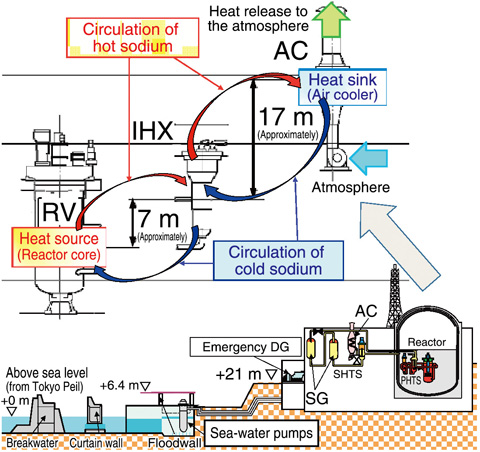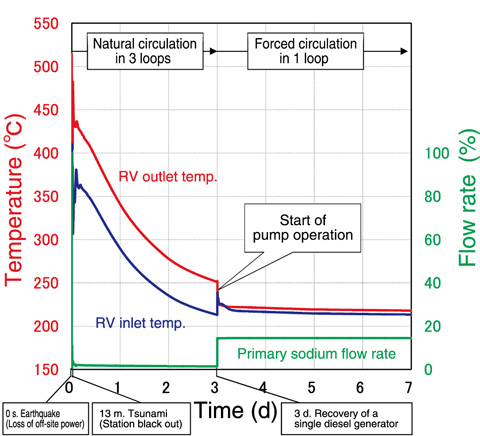
Fig.2-9 Schematic view of the height difference and natural circulation mechanism at the “MONJU” plant

Fig.2-10 RV inlet/outlet temperatures and primary sodium flow rate (analytical results)
The decay heat of the core in the “MONJU” reactor should be safely removed, even if the reactor is shut-down due to insertion of the control rods during an earthquake.
Therefore, the coolant in the heat transport system (HTS) is forced to be circulated by rotating the circulation pumps, for which the power will be supplied by alternating-current (AC) fed by the emergency diesel generator, even if the off-site power supply is lost. The decay heat of the core can then be safely released to the atmosphere by switching the heat sink from the steam generators to the air coolers. However, the loss of all AC power (SBO: Station Black-Out) can be imagined in the case of a beyond-the-design-basis huge tsunami that would destroy the sea-water pumps of the component cooling water system and result in a diesel generator shut-down. Therefore, the “MONJU” plant is designed to be able to cool down the core via natural circulation induced by the temperature difference of the coolant without the forced convection caused by the circulation pumps. A height difference of approximately 24 m between the core and the air cooler makes this cooling possible. In addition, the major equipment is located 21 m or more above sea level (Fig.2-9).
A detailed investigation of the capability to cool the core using natural circulation during an SBO induced by an earthquake and a subsequent tsunami was conducted on the basis of these design considerations and considering the accident at the TEPCO’s Fukushima Daiichi NPS (1F). The plant dynamics computer code Super-COPD was employed, which was validated via an analysis of preliminary test results for the natural circulation at “MONJU”.
The results showed that, during an SBO event in which a tsunami attack is assumed 13 minutes after an earthquake under a rated power initial condition (Fig.2-10), the plant will be cooled down to a cold shut-down state after approximately three days via natural circulation. In addition, it was clarified that the core can be successfully cooled down even under varied conditions, such as different tsunami delay times, initial reactor powers, core-decay heats, and atmospheric temperatures. It was also confirmed that even if one HTS fails, the two remaining HTSs have sufficient core cooling capabilities.
Therefore, the reactor core of the “MONJU” reactor will be safely cooled down even during an SBO event similar to the accident at 1F. Natural circulation of the sodium coolant will enable decay heat removal as long as the sodium-coolant flow circuits are intact and secured.